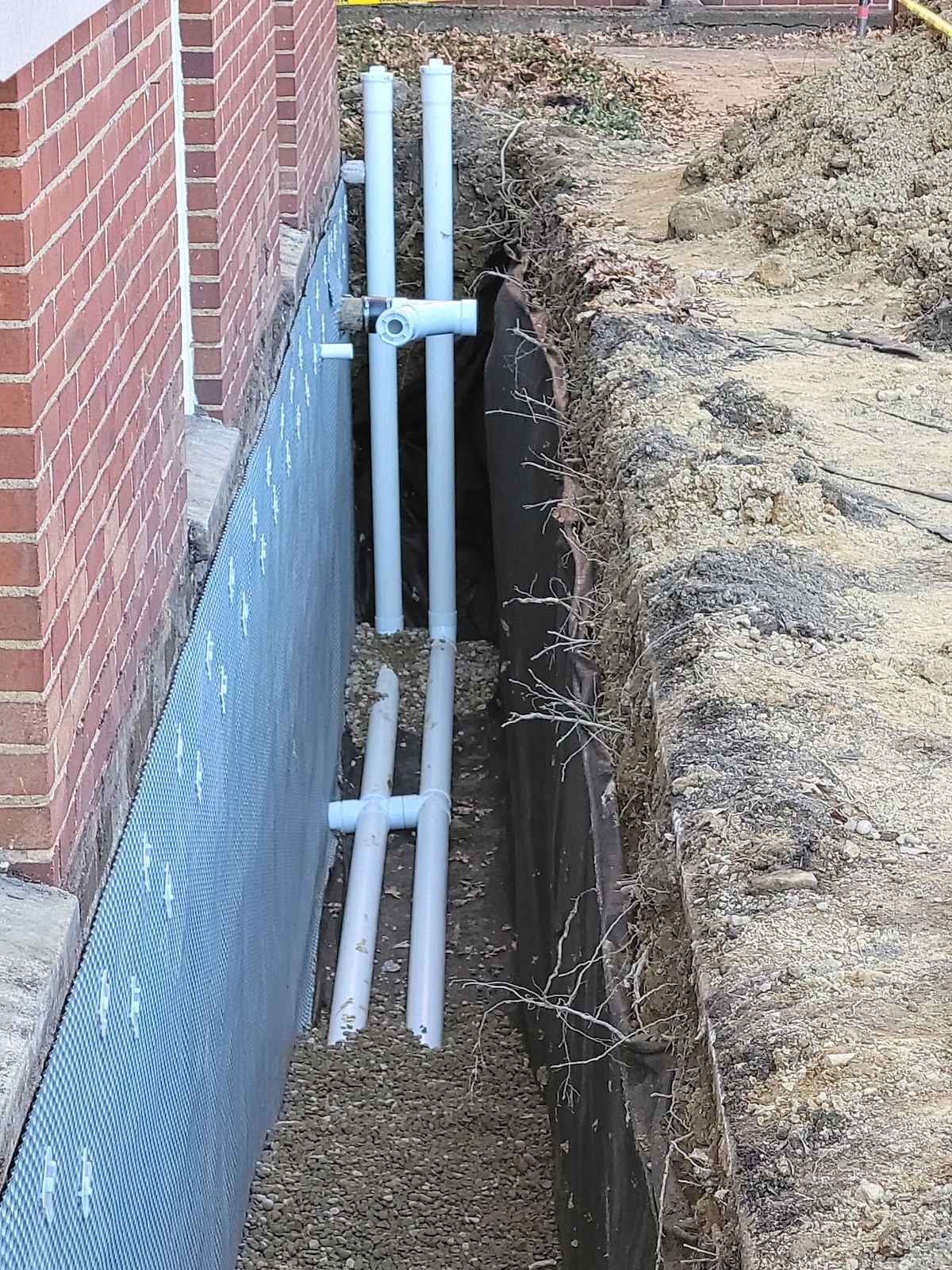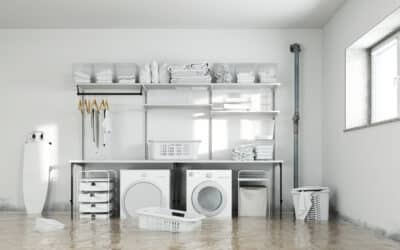Have you noticed water pooling around your foundation after one of Ohio’s unpredictable storms?
Maybe you’ve discovered dampness creeping into your basement walls.
If you’re in either of these situations, you’ll be facing a critical decision: should you invest in interior waterproofing or exterior waterproofing?
Many homeowners find themselves asking the same question, and the answer isn’t always obvious. The good news is that we’re here to help you choose the right basement waterproofing solution.
Here’s everything you need to know about interior and exterior drain systems so you can protect your home with confidence.
Understanding Interior Waterproofing Systems
Interior waterproofing tackles water issues from inside your basement. By doing so, it creates a comprehensive defense system that manages water after it’s already trying to enter your home.
How Interior Drain Systems Work
Interior waterproofing systems work by collecting water that penetrates your foundation and directing it away before it can cause damage to your living space. These systems typically include a drainage channel installed along the interior perimeter of your basement floor, connected to a sump pump that actively removes collected water.
The process involves creating a controlled path for water infiltration, acknowledging that some water may still find its way through your foundation but ensuring it never reaches your basement floor or walls, where it can cause damage.
When Interior Waterproofing Makes Sense
Interior waterproofing is often the ideal solution for homeowners dealing with:
- Finished basements where exterior excavation would be too disruptive
- Homes with landscaping, driveways, or structures that make exterior access difficult
- Foundation water issues that occur primarily during heavy rainfall
- Budget constraints that require effective protection at a lower upfront cost
- Situations where the exterior foundation is structurally sound but water management is needed
This approach is particularly effective for homes in our area because it handles the groundwater pressure that’s common in Northern Ohio’s clay-heavy soil conditions.
Exploring Exterior Waterproofing Solutions
So, you’re now familiar with interior waterproofing. Let’s talk about exterior waterproofing.
Exterior waterproofing addresses water problems at their source. As a result, getting this type of protection done prevents water from ever reaching your foundation’s walls.
How Exterior Drain Systems Function
Exterior waterproofing creates a barrier between groundwater and your foundation by applying waterproof membranes to the outside of your foundation walls and installing drainage systems around your home’s perimeter. This approach includes proper grading, drainage tile installation, and foundation sealing.
The system works by redirecting water away from your foundation entirely, reducing hydrostatic pressure and preventing water from ever making contact with your basement walls.

When Exterior Waterproofing Is the Right Choice
Exterior waterproofing becomes the preferred solution when dealing with:
- New construction or major renovation projects where excavation is already planned
- Severe foundation cracking or structural issues that require exterior access
- Persistent water problems (like backed-up drains) that interior solutions haven’t fully resolved
- Homes with significant grading problems that direct water toward the foundation
- Properties where long-term prevention is prioritized over immediate cost considerations
For homes built on sloping lots or properties with poor drainage, exterior waterproofing often provides the most comprehensive protection against our region’s challenging weather patterns.
Key Differences That Impact Your Decision
Understanding these crucial differences will help you choose the right waterproofing approach for your specific situation.
Cost and Installation Considerations
Interior waterproofing typically requires less excavation and can often be completed without major landscape disruption. The installation process is generally faster and less expensive upfront, making it an attractive option for homeowners who need immediate protection.
Exterior waterproofing involves more extensive excavation and potentially higher upfront costs, but it addresses water issues at their source and can provide longer-lasting protection. The investment often pays off through reduced long-term maintenance and comprehensive moisture control.
Effectiveness and Longevity Factors
Interior systems are excellent for managing water that’s already infiltrating your foundation, providing reliable protection for most basement water issues that are common in the area. These systems are easily accessible for maintenance and repairs.
By comparison, exterior waterproofing offers more comprehensive protection by preventing water infiltration entirely. When properly installed, these systems can provide decades of protection and may increase your home’s resale value.
Making the Right Choice for Your Home
The best waterproofing solution for your home depends on your specific water issues, property characteristics, and long-term goals.
Consider your home’s unique situation: the severity of water problems, your budget, the accessibility of your foundation, and your timeline for completion. Sometimes, a combination of both interior and exterior solutions provides the most comprehensive protection.
We Can Help You Decide
Don’t let water damage catch you off guard another season. Our certified professionals have helped countless homeowners choose and install the right waterproofing systems for their unique situations.
We’ll assess your specific water issues, explain your options clearly, and recommend the most effective solution for your home and budget.
Get a free foundation inspection and take the first step toward a dry basement!


